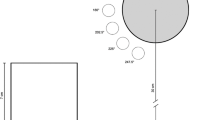Abstract.
Numerous everyday tasks require the nervous system to program a prehensile movement towards a target object positioned in a cluttered environment. Adult humans are extremely proficient in avoiding contact with any non-target objects (obstacles) whilst carrying out such movements. A number of recent studies have highlighted the importance of considering the control of reach-to-grasp (prehension) movements in the presence of such obstacles. The current study was constructed with the aim of beginning the task of studying the relative impact on prehension as the position of obstacles is varied within the workspace. The experimental design ensured that the obstacles were positioned within the workspace in locations where they did not interfere physically with the path taken by the hand when no obstacle was present. In all positions, the presence of an obstacle caused the hand to slow down and the maximum grip aperture to decrease. Nonetheless, the effect of the obstacle varied according to its position within the workspace. In the situation where an obstacle was located a small distance to the right of a target object, the obstacle showed a large effect on maximum grip aperture but a relatively small effect on movement time. In contrast, an object positioned in front and to the right of a target object had a large effect on movement speed but a relatively small effect on maximum grip aperture. It was found that the presence of two obstacles caused the system to decrease further the movement speed and maximum grip aperture. The position of the two obstacles dictated the extent to which their presence affected the movement parameters. These results show that the anticipated likelihood of a collision with potential obstacles affects the planning of movement duration and maximum grip aperture in prehension.
Similar content being viewed by others
Author information
Authors and Affiliations
Additional information
Electronic Publication
Rights and permissions
About this article
Cite this article
Mon-Williams, M., Tresilian, J., Coppard, V. et al. The effect of obstacle position on reach-to-grasp movements. Exp Brain Res 137, 497–501 (2001). https://doi.org/10.1007/s002210100684
Received:
Accepted:
Issue Date:
DOI: https://doi.org/10.1007/s002210100684




